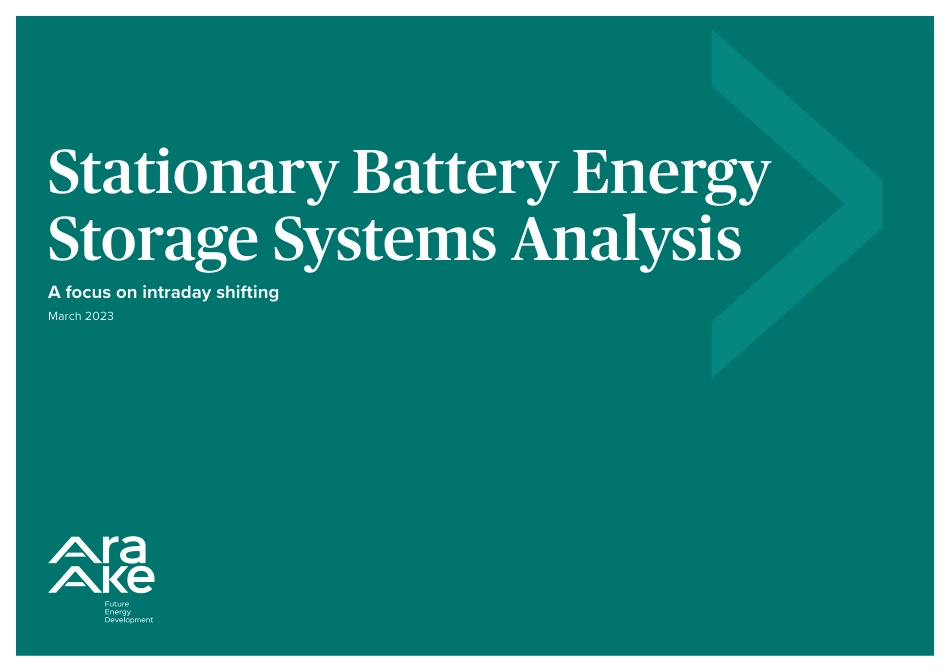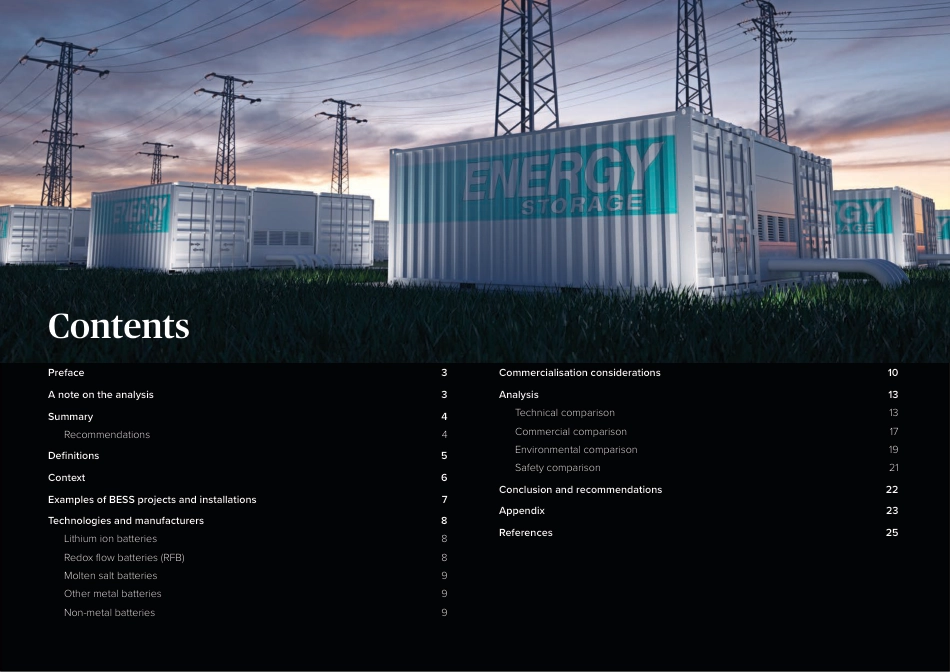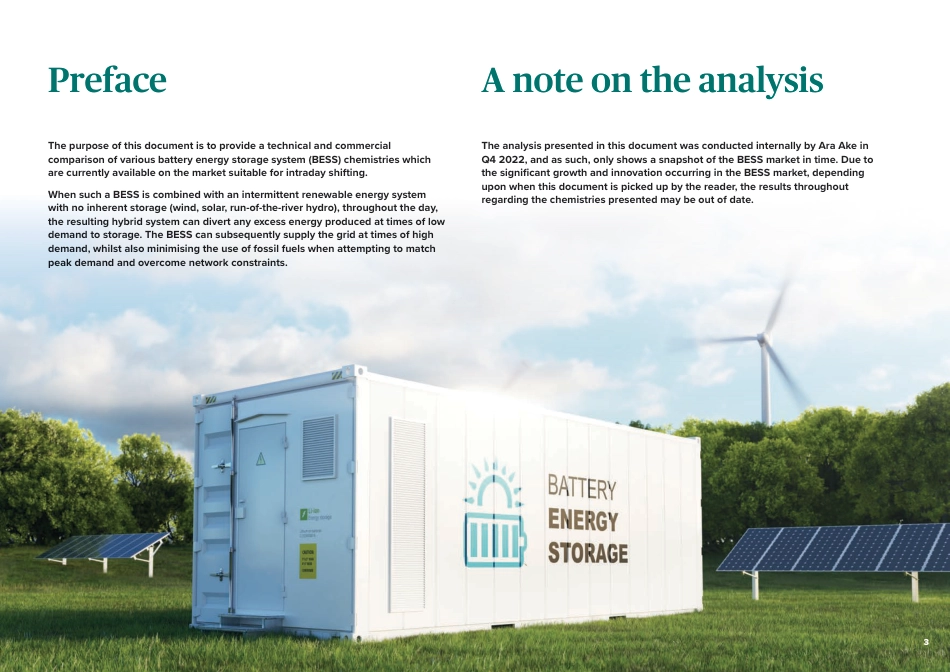Stationary Battery Energy Storage Systems AnalysisA focus on intraday shiftingMarch 2023ContentsPreface 3A note on the analysis 3Summary 4Recommendations 4Definitions 5Context 6Examples of BESS projects and installations 7Technologies and manufacturers 8Lithium ion batteries 8Redox flow batteries (RFB) 8Molten salt batteries 9Other metal batteries 9Non-metal batteries 9Commercialisation considerations 10Analysis 13Technical comparison 13Commercial comparison 17Environmental comparison 19Safety comparison 21Conclusion and recommendations 22Appendix 23References 25 PrefaceThe purpose of this document is to provide a technical and commercial comparison of various battery energy storage system (BESS) chemistries which are currently available on the market suitable for intraday shifting.When such a BESS is combined with an intermittent renewable energy system with no inherent storage (wind, solar, run-of-the-river hydro), throughout the day, the resulting hybrid system can divert any excess energy produced at times of low demand to storage. The BESS can subsequently supply the grid at times of high demand, whilst also minimising the use of fossil fuels when attempting to match peak demand and overcome network constraints.The analysis presented in this document was conducted internally by Ara Ake in Q4 2022, and as such, only shows a snapshot of the BESS market in time. Due to the significant growth and innovation occurring in the BESS market, depending upon when this document is picked up by the reader, the results throughout regarding the chemistries presented may be out of date.A note on the analysis3Renewable energy is New Zealand’s largest source of electricity generation (82%) and provides approximately 41% of New Zealand...



